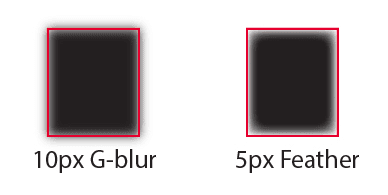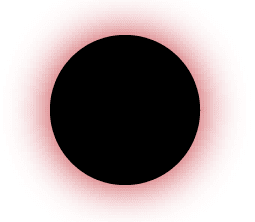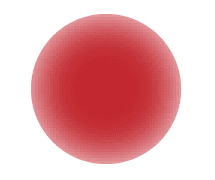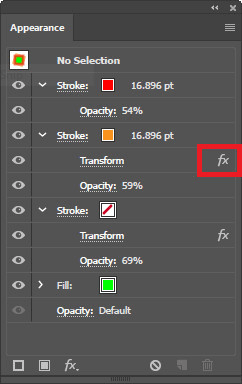Most people who design vector graphics, have heard of Adobe Illustrator. It's great for creating logos, layouts, and simple drawings that need to scale for print and digital media. What you might not realize is that this app also has support for raster effects.
Illustrator's Blur is a popular effect that can give your images a sense of motion and depth. But what happens when you want to get rid of it?
We've all been there — tasked with editing someone else's art or messing around with our own until we take things a step too far. In these cases, knowing how to remove the blur effect in Illustrator is handy knowledge. Here's what to understand.
What Is Adobe Illustrator?
Adobe Illustrator is a vector graphics-based application. This means that it stores image data in the form of precise mathematical shapes.
Another way to put it: Adobe tools like Photoshop keep raster data in a pixel-by-pixel format. Illustrator tracks the lines, points, curves, and polygons found in your art.
The big advantage of this method? Vector graphics are easy to edit piece-by-piece — keeping all the parts independent makes it a breeze to change colors, transform, and adjust. You can also resize them without things looking grainy, so they're commonly used in printing and layout.
But Illustrator also has limited support for raster graphics — you can embed them in images and apply them to shapes as fills. It even supports raster effects that generate pixels from computed vector data. Some examples include SVG Filters, Drop Shadow, Glow, Feather, and Blur.
What Is the Blur Effect In Illustrator?
Blur is one of the many raster effects you'll find in the Adobe Illustrator Effect menu. It comes in three flavors:
- Gaussian blur is a quick way to blur a selection by your preferred amount. It smooths out high-frequency details to create a kind of hazy look.
- Smart blur lets you choose a radius, threshold amount, and quality to precisely blur specific areas.
- Radial blur produces an effect like what you'd get if you looked at your art through a zooming or rotating camera. In addition to choosing from zoom or spin mode, you can pick an amount, quality level, and origin point.
Why Would You Need to Remove Blur in Illustrator?
Effects are a great way to make artwork more dynamic. By trying simple tweaks and adjusting your settings with care, you can produce a wide range of looks. In some cases, it's possible to completely change the feel of an image with a single effect!
At the same time, effects aren't the ideal solution to every creative problem. When overused, they can make your artwork look generic or unprofessional.
There are also several technical reasons to remove effects — especially when it comes to blur:
Effects can be slow to render.
One common complaint about Illustrator's effects is that they take too long. Remember that these effects get applied on top of existing artwork — they don't change it for good.
This has the benefit of making it easy to step backward if you want to try something else. The downside is that Illustrator has to recalculate the effect each time you make a change. With complicated effects, like high-quality radial and smart blurs, this can make the app slow and laggy.
Older versions of effects can make color management tougher.
When necessary, Illustrator's raster effects will convert colors to match the color space your document uses. For instance, if you apply a blur to an object that uses spot color and process color or multiple spot colors, Illustrator automatically tweaks that object’s appearance.
This is helpful to ensure things look the same from screen to print. But if you're importing a document and want to preserve it, you'll need to watch out. The good news is that this is mostly an issue in legacy versions before CS3.
Blur isn't always the simplest or best answer.
Like many blur tools, Illustrator's version will blur objects outward. In other words, when you blur something, it’ll slightly increase in size.
This may not be a problem with many types of artwork. But for precise layouts where detail matters, it can be a dealbreaker. In these cases, it's often best to switch to an alternative effect, like Feather.

What if you prefer blur? Well then, you'll typically need to use a clipping mask. Copy the bottom shape you're blurring, and make sure the copy doesn't have any effects.

Then, select both shapes and use the menu to create a clipping mask. The copied shape will serve as a mask so that only what's inside is visible.

How to Remove Blur in Illustrator
If nothing else will do, you'll need to remove the blur effect. Fortunately, this isn't too tough, and there are a few ways to deal with it.
Hiding a Blur Effect
Sometimes, you might only want to remove the blur effect temporarily. This can happen when you're trying to speed things up while you work on other parts of the image. It's also useful for comparing versions of the same file to see how things look with different settings.
To hide a blur, you'll want to select the item in the layer panel. Then, you can open the Appearance panel and click on the eyeball icon to the left of the target effect (the effect will say the name of the blur you used and have an "fx" icon). This will both hide the effect and disable it, so Illustrator doesn't compute it.

The only downside of this method? You'll need to disable your effects item-by-item or apply them to entire groups, which gives you less control. You'll also have to remember to re-enable the effects before printing or sharing your work.

Permanently Removing a Blur Effect
Removing a blur effect for good is also an easy task.
Once again, you'll start by heading to the Appearance panel after selecting an object. Then, click on the blur effect you'd like to remove.
After picking the blur effect, you'll see the 🚫 symbol light up at the bottom of the panel, second from left.
Click this to remove the effect. This action will be added to your undo stack, so you can go back if you decide it's not really what you wanted.
Dealing With Blurred Images in Adobe Illustrator
As we mentioned earlier, sometimes, you'll be working with an Illustrator file that includes raster images. In these cases, the image itself might already include a blur orrequire AI enlargement. For instance, you might have imported a photo that was simply fuzzy.
There are a few possible options here:
Try a New Image Source File
If you've still got the original photo, you can go back and use a different version. This is the simplest route, but there's a problem. You might not always have the photo on hand, or you might have a version that’s blurry at the highest possible quality.
Use the Unsharp Mask Effect
Another workaround is to try using a sharpen effect. This raster-based effect is listed under the Effect menu as Unsharp Mask —a pretty confusing name considering what it does!
When you apply Unsharp Mask, it'll search your image for places where the colors change. Then, it'll sharpen the transitions as much as it can.
Unsharp Mask focuses on making edges more noticeable. It may not work for images with wide blurry areas, but the illusion can still prove useful.
Try an Entirely Different App
Adobe Illustrator is pretty capable. It's not quite a one-size-fits-all solution, however. We aren't the first ones to say it, but if you really want to tweak raster images, you should switch to an app designed for the purpose.
This doesn't mean you have to give up Illustrator for your vector work and layout composition tasks. But you'll save yourself a huge headache by handling the photo editing outside of Illustrator and then importing the results.
The only negative aspect of this kind of process is that you won't be able to undo the effect. On the other hand, if you're tired of struggling with slow Illustrator files, you probably won't care about preserving all those steps anyway.
Apps like Photoshop and GIMP support blurring and sharpening. They include a range of options that make it possible to blur or sharpen images within reason — these tools can only do so much.
Alternatively, working with a web-based solution, like Imagewith.ai, may be the best option. Imagewith.ai's image sharpener tool allows you to sharpen your image in a web browser, removing blur without requiring lots of CPU or GPU power. It's perfect when you'd rather not switch to a heavyweight, slow app like Photoshop.
Conclusion
Illustrator is way more effective when you develop a good workflow. Although tools like Blur are nice, they aren't always appropriate, and removing these effects doesn't always work out. Optimize your creative output by checking out Imagewith.ai for the ideal hybrid solution.






